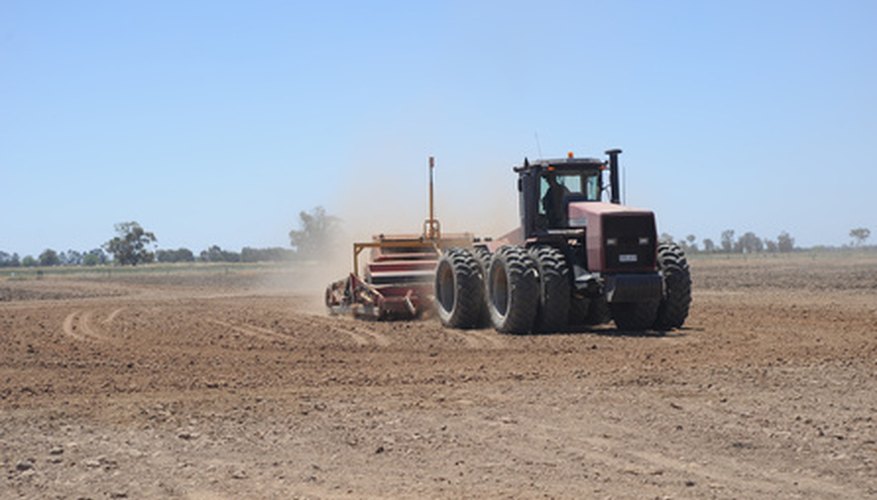A subsidy is money given to help a business. A farm subsidy is an economic tool that governments use to influence prices and maintain the food supply. The funds are often given in the form of a grant or cash payment to the business. Some subsidies are in the form of zero- or low-interest loans. Traditionally, farmers receive cash payments each year. These payments or subsidies are issued for several reasons.
Significance
Farm subsidies are given for various reasons. Governments use them as a tool to control market prices, which are affected by natural disasters, severe weather conditions, supply shortages and surpluses, and other events that affect the national food supply. The U.S. government uses the subsidy to ensure that food is accessible to every American.
Advantages
Farm subsidies work as not only a price control, but also as cushion for small farms. The cash payments make up for the money lost during the years of a bad crop. Disaster payments are especially helpful, as they are like insurance on crops destroyed by floods, tornadoes, a freeze, hurricanes and other natural disasters.
Disadvantages
The subsidies work as a price control by paying farmers to leave fields unplanted in times when the market is experiencing a surplus. Instead of using the excess crops to feed the needy, the farmers are not growing, yet being paid to do so. Farm subsidies also inhibit the normal market cycle. With the exception of disaster payments, the cash from farm subsidies prevent the normal fluctuation in price due to supply and demand. This makes the price completely dependent on government intervention, according to the Environmental Working Group Farm Subsidy Primer.
- The subsidies work as a price control by paying farmers to leave fields unplanted in times when the market is experiencing a surplus.
Types of Payments
Farm subsidies are paid in the form of direct cash payments, which go only to producers of grains and certain crops like peanuts. Countercyclical payments are those that pay farmers for practices that go against the normal economic cycle. Conservation subsidies repay farmers to leave specific farmlands unplanted in order to preserve habitats, for example. Insurance and disaster aid subsidies help farmers who have experienced severe crop damage or loss due natural disasters, pests and, for some, even market prices.
- Farm subsidies are paid in the form of direct cash payments, which go only to producers of grains and certain crops like peanuts.
- Countercyclical payments are those that pay farmers for practices that go against the normal economic cycle.
Legislation
Farm subsidies began with the Agricultural Credits of 1923. The legislation was implemented to boost prices after World War I, when the overproduction during the war caused a surplus and price drop afterward. In 1929, the Agricultural Marketing Act created the Federal Farm Board, which actively sought to control the prices of cotton and grains. That venture failed, but the New Deal brought the Agricultural Adjustment Act in 1933. This time the government gave farmers quotas for planting and physically took surplus crops of the market. The Commodity Credit Corporation was created to give loans to farmers who agreed to the price controls. Today, the federal government is leaning more toward reducing subsidies and creating price supports in other ways.
- Farm subsidies began with the Agricultural Credits of 1923.
- The legislation was implemented to boost prices after World War I, when the overproduction during the war caused a surplus and price drop afterward.
